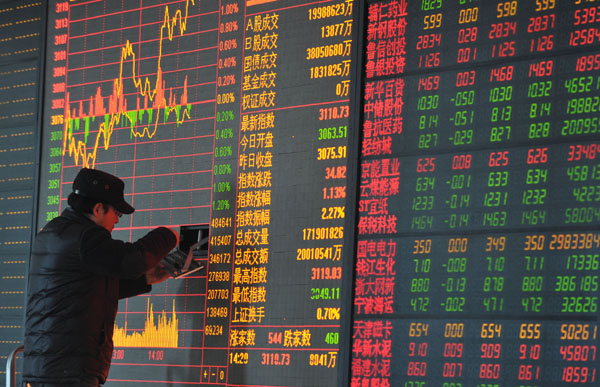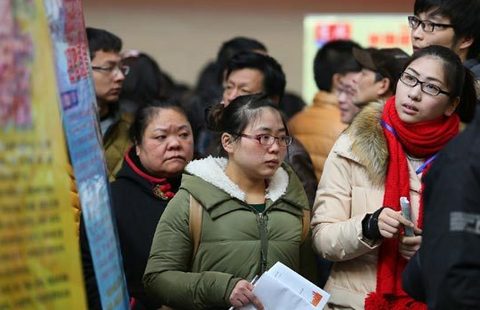In Shanghai, investors have a different 'option'
By Li Xiang (China Daily) Updated: 2015-02-10 07:52
 |
|
A technician repairs the electronic display at a brokerage in Fuyang, Anhui province, on Feb 9, 2014. On the first trading day of stock options, shares of securities firms rose 4.13 percent and led the gain of the Shanghai Composite Index. [Photo provided to China Daily] |
Derivatives based on exchange-traded fund are seen as reducing volatility in market
Trading of stock options made its long-awaited debut on the Shanghai Stock Exchange on Monday, allowing investors more ways to hedge risks and make profits.
Volume was light, with just 25,113 contracts valued at only 37.86 million yuan ($6.06 million) changing hands. But the introduction of stock options was viewed as a milestone for the nation's capital market, which has long been known for being underdeveloped and volatile.
The launch of options trading also underscored the securities regulator's intent to attract large and sophisticated institutional investors into the market, which is now dominated by small retail investors.
"A capital market without stock options is like an economy without insurance," Huang Hongyuan, general manager of the Shanghai Stock Exchange, said just before trading kicked off.
Options trading "will help improve the capital structure of the market and meet the demand for value investment by long-term institutional investors such as the country's social security fund and the pension fund", he said.
Options give buyers the right to buy or sell the underlying instrument at an agreed price on a specific date. The options are the first equity derivative China introduced since it launched the trading of stock index futures in 2010.
At present, options trading is limited to the Shanghai Stock Exchange 50 ETF, an exchange-traded fund tracking the country's 50 most heavily weighted stocks.
The most actively traded contracts on Monday were March call options at 2.2 yuan, accounting for one-fourth of total trading volume, as investors bet on further gains for blue-chip stocks in the short term. Call options give holders the right to purchase the underlying asset, while puts allow them to sell.
- China launches first equity options, investors bet stock prices to rise
- Shares skid as selling pressure hits sentiment
- Decoding China's reserve requirement ratio
- China continues regular inspection on margin trading
- Chinese brokerages see surging profits in 2014
- Chinese public funds see Q4 profits at 4-year high
- China producer prices continue declines
- China January inflation cools to 0.8%
- UnionPay expand along the 'belt and road'
- Watch factory to pay more
- Yanjing seeks foreign investor for strategic 20% holding
- For food safety, China's agriculture needs market-driven innovation
- Guangdong growth falters in 2014
- Commodity import levels down in Jan

















